100th Anniversary Great Nave Tour at the Cathedral of St. John the Divine
Celebrate the 1925 construction of the stunning nave inside the world's largest Gothic cathedral!


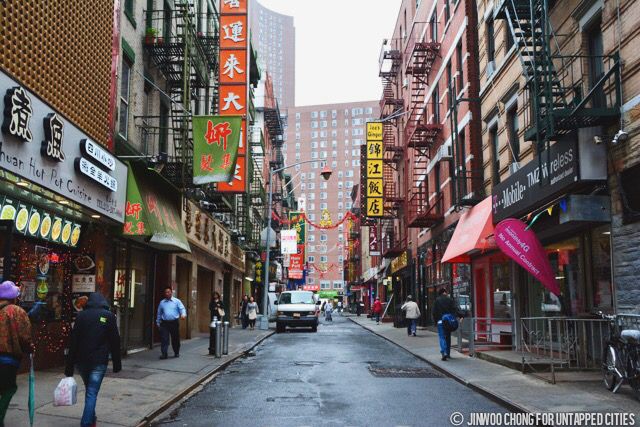
Manhattan’s Chinatown is one of the oldest and largest concentrations of Chinese people outside of China. Still comprising more than 90,000 inhabitants as of today, its colorful banners and bustling street marketplaces are a persisting fixture of Lower Manhattan. It can trace the inklings of its history down to a single person, Guangzhou-born businessman Ah Ken, who was the first person to permanently settle in the area that is now known as Chinatown in 1858. Today, it faces decline due to rising rents and the looming threat of gentrification, but holds with it an illustrious history, from Ah Ken’s original cigar shop to the days of the Chinese Exclusion Act to the immense expansion and diffusion to other New York Chinatowns after the Immigration and Nationality Act of 1965.
And yet, amid the changing times, demographics, and culture of what began as a small outcropping of the first Chinese immigrants to America, are the conversely unchanging roads and alleys that frame it. Some, like the infamous Doyers Street, are able to be traced back to the late 19th century. Others, like Pell Street, have only become recently recognizable due to its exposure on film and television.
In any case, if you ever find yourself wandering around Canal Street with little to do but learn about Chinatown’s history and people (as is frequently the case), the only thing you need to do is follow the streets. Here are a 5 notable alleys to check out:
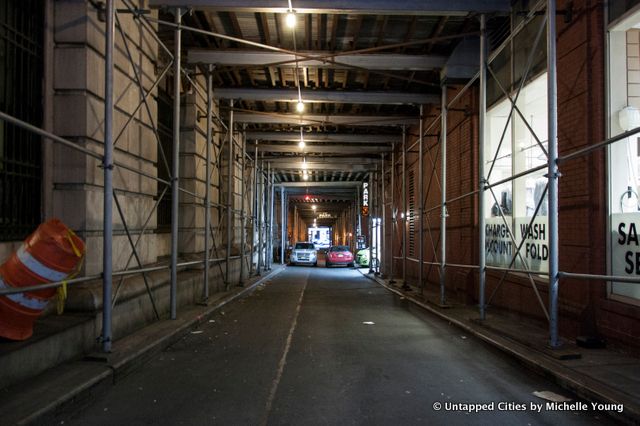
Sitting right between Broadway and Lafayette Street is a small causeway currently covered in scaffolding. Catherine Lane, like Catherine Street in the Lower East Side, was named for the wife of Henry Rutgers, a veteran of the United States Revolutionary War and a New York City philanthropist who donated $5,000 (which now equates to about $100,000 today) to the faltering Queens College in New Brunswick, NJ, now named in his honor as Rutgers, the State University of New Jersey. The Rutgers lived in New York for much of their lives and operated a small farm in Southeast Manhattan. Today, Catherine Lane is flanked by an office building and a laundromat, with a parking lot entrance halfway down.
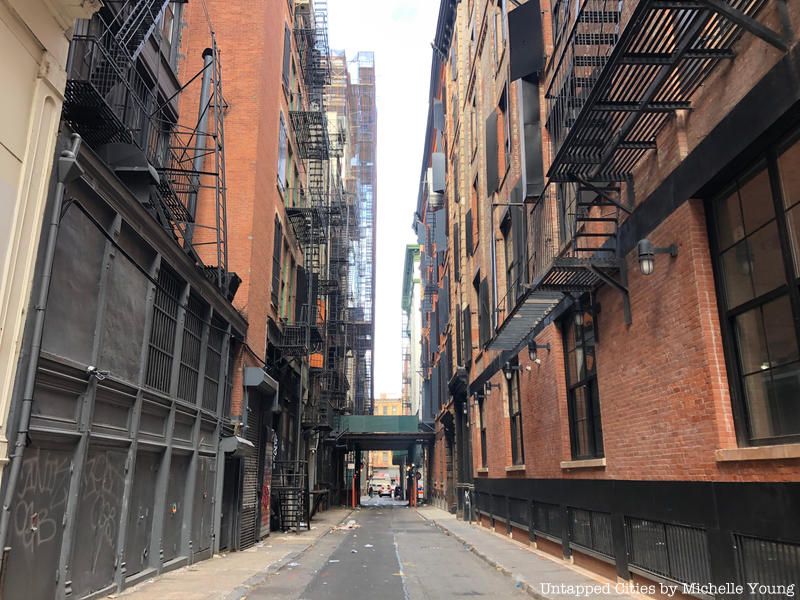
Cortlandt Alley is named for the Van Cortlandt family, who immigrated to then-New Amsterdam in 1637 and became a powerful landowning family. They would eventually buy the Van Cortlandt estate in the Bronx in 1899 and turning it into the namesake park. Today, Cortlandt Alley houses Mmuseumms 1 and 2, a set of mini-museums built into a freight elevator and a window display, respectively, and was the backdrop of the video for the Vampire Weekend song “Cousins.”
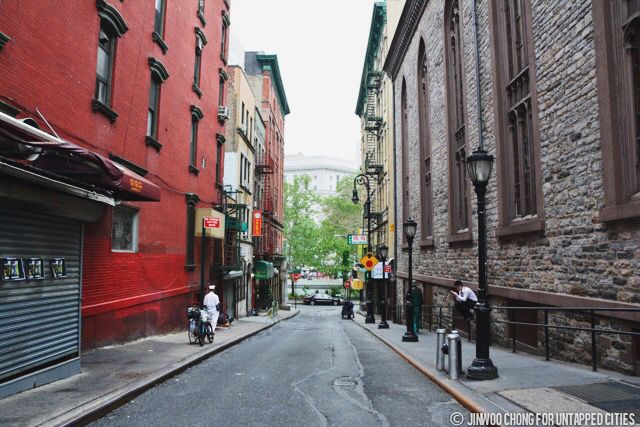
Mosco Street, though small, is actually one of the last standing remnants of Manhattan’s old Five Points neighborhood, bound by Center Street, Bowery, and Canal Street in Lower Manhattan. The Five Points earned an unsightly reputation in Chinatown‘s earliest years for rampant disease and unbridled gang violence. The Five Points Gang, of surprisingly Italian-American and Irish origin, controlled the area and kept it a dangerous slum for close to 70 years. The area, including Mosco Street, was the scene of the Dead Rabbits Riot, a gang-altercation between the Dead Rabbits and the Bowery Boys that was fictionalized in the 2002 film “Gangs of New York,” which takes place in the Five Points.
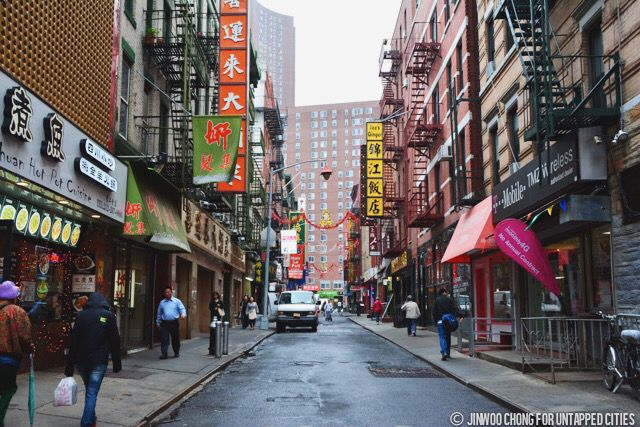
Like many of the streets around the area, Pell Street was dominated by immigrant populations over the years. While at first a part of the once larger Little Italy, Pell Street was flooded with Chinese immigrants, most of them male due to the strict immigration laws in the early 20th century. It fell upon the tongs, or secretive organizations and sworn brothers not unlike modern gangs, to import and distribute women to the communities. No, that is not a joke. Much of the violence observed in the Five Points during this period was between rival tongs fighting over women. The tongs would normally hire those who were known as hatchet men to carry out these bloody altercations right in the streets. Which leads to…
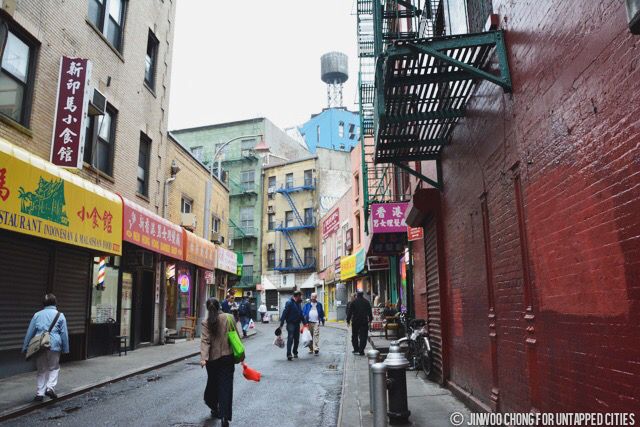
Doyers Street, one of the oldest and most unusual streets in all of Manhattan. It is one of only a handful in the entire city that curves, a testament to its age and longevity. Its history, however, is less than savory, to the point where it was colloquially known as the “Bloody Angle,” to the surprisingly large amount of people and so-called hatchet men who died in the streets, more than any other intersection in Manhattan. Today, it enjoys a far quieter ambiance, as hardly any cars use it due to other, quicker surrounding roads.
The first Chinese theater in the city was also built on Doyers in the late 19th century and the oldest continuously run dim sum joint, Nom Wah Tea Parlor is here. As a sign of the changing times, two hidden speakeasies operate on this street–Apotheke and Pulqueria, but you can still enter one of the tunnels that enabled gang escapes at the turn of the century.
Next, read about Life In a Crowded Chinatown Tenement House by Photographer Annie Ling. Get in touch with the author at @jinwoochong.
Subscribe to our newsletter